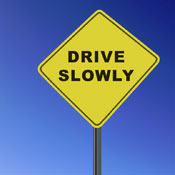Acura 3.2CL Insurance – 10 Tricks to Save Money

Expensive auto insurance can take a big chunk out of your checking account and make it impossible to make ends meet. Shopping your coverage around is free, only takes a few minutes, and is a good way to cut your insurance bill. Multiple insurers compete for your hard-earned dollar, so it’s not easy to compare every insurer and get the best coverage at the lowest cost out there.
It is always a good idea to take a look at other company’s rates every six months because rates are variable and change quite frequently. If you had the lowest price for 3.2CL insurance a year ago there may be better deals available now. Starting right now, forget anything you know (or think you know) about auto insurance because you’re going to learn the things you must know in order to remove unneeded coverages and save money.
If you have insurance now or need new coverage, you can learn to get lower rates while maximizing coverage. Finding affordable coverage is quite easy. Drivers just need to learn the tricks to find the lowest price on the web.
How to Get Auto Insurance
Reducing your insurance rates is surprisingly easy. Just take time getting comparison quotes online with multiple companies. It is quite easy and can be accomplished in several different ways.
- The most efficient way to find low rates is to use a rate comparison form (click to open form in new window). This type of form saves time by eliminating multiple quote forms to each individual auto insurance company. One simple form gets you price quotes from many national carriers.
- A less efficient way to shop for auto insurance online consists of visiting the website for each individual company to complete their respective quote request forms. For sake of this example, let’s assume you want comparison quotes from State Farm, Liberty Mutual and Farmers. To find out each rate you need to spend time on each company’s site to enter your coverage information, and that’s why the first method is more popular. For a handy list of car insurance company links in your area, click here.
- The most time-consuming method to compare rates is to waste gas driving to local insurance agencies. The internet eliminates the need for an insurance agent unless you have a need for the professional advice that only a license agent can provide. Drivers can get the lowest quotes online and still use a local agent. We’ll cover that shortly.
It’s your choice how you get your quotes, but ensure you’re using the exact same coverages and limits with every price quote. If the quotes have differing limits it will be very difficult to make an equal comparison.
Neighborhood insurance agents
Certain consumers would rather talk to a local agent. Good agents can answer important questions and give you someone to call. The best thing about price shopping on the web is you may find lower rates and still have an agent to talk to. Supporting small agencies is important especially in small towns and cities.
Upon completion of this short form, your insurance data is immediately sent to agents in your area who will return price quotes for your coverage. There is no need to visit any agencies since price quotes are sent to your email.
The different types of insurance agents
When looking for a local agent, there are two types of insurance agents that you can select. Agencies are categorized either independent or captive. Both types can insure your vehicles, but it’s worth learning the differences because it can impact the selection process.
Independent Insurance Agents
Independent agencies do not work for one specific company but instead can place your coverage with many different companies and potentially find a lower price. If your agent finds better pricing, the business is moved internally and you won’t have to switch agencies. When searching for an agent, you should always get quotes from at least one independent agent to ensure the widest selection of prices.
Agency Captives
This type of agents have only one company to place business with and some examples include Allstate, AAA, Liberty Mutual and State Farm. These agents are not able to shop your coverage around so they are skilled at selling on more than just price. Captive agencies are very knowledgeable on their products and sales techniques and that can be a competitive advantage.
To view a full list of insurance agents, visit this site.
Choosing an insurance agent shouldn’t rely on just a low price. These questions are important to ask:
- Will your rates increase after a single accident?
- Do they have any clout with companies to ensure a fair claim settlement?
- Who are their largest clients?
- Are they full-time agents?
- If they are an independent agency, which companies do they recommend?
- Will vehicle repairs be made with aftermarket parts or OEM replacement parts?
Upon receiving reasonable responses to these questions in addition to an acceptable price estimate, chances are good that you have found an insurance agency that will adequately provide auto insurance. But keep in mind once you purchase a policy you can cancel your policy for any reason so never feel that you’re stuck with any specific agency for the full term.
Car insurance 101
Understanding the coverages of auto insurance aids in choosing which coverages you need and proper limits and deductibles. Policy terminology can be ambiguous and nobody wants to actually read their policy. Listed below are the normal coverages found on most auto insurance policies.
Liability
This coverage protects you from damage or injury you incur to people or other property. Liability coverage has three limits: bodily injury for each person, bodily injury for the entire accident, and a limit for property damage. You might see values of 50/100/50 which means a $50,000 limit per person for injuries, $100,000 for the entire accident, and $50,000 of coverage for damaged propery. Alternatively, you may have one limit called combined single limit (CSL) that pays claims from the same limit without having the split limit caps.
Liability insurance covers claims like loss of income, emergency aid and pain and suffering. The amount of liability coverage you purchase is your choice, but buy higher limits if possible.
Uninsured or underinsured coverage
Uninsured or Underinsured Motorist coverage protects you and your vehicle’s occupants when the “other guys” either are underinsured or have no liability coverage at all. It can pay for injuries to you and your family as well as your vehicle’s damage.
Since many drivers only carry the minimum required liability limits, their liability coverage can quickly be exhausted. That’s why carrying high Uninsured/Underinsured Motorist coverage should not be overlooked. Usually the UM/UIM limits are identical to your policy’s liability coverage.
Comprehensive protection
This pays to fix your vehicle from damage caused by mother nature, theft, vandalism and other events. You first have to pay a deductible and then insurance will cover the rest of the damage.
Comprehensive coverage pays for claims such as damage from flooding, falling objects, hitting a deer, a tree branch falling on your vehicle and a broken windshield. The maximum amount your auto insurance company will pay is the actual cash value, so if the vehicle is not worth much consider dropping full coverage.
Collision insurance
Collision insurance covers damage to your 3.2CL resulting from a collision with an object or car. You first must pay a deductible and the rest of the damage will be paid by collision coverage.
Collision insurance covers claims such as crashing into a ditch, hitting a parking meter, damaging your car on a curb, colliding with another moving vehicle and backing into a parked car. Collision coverage makes up a good portion of your premium, so analyze the benefit of dropping coverage from lower value vehicles. You can also choose a higher deductible in order to get cheaper collision rates.
Medical expense coverage
Med pay and PIP coverage kick in for bills like nursing services, pain medications, prosthetic devices, X-ray expenses and doctor visits. The coverages can be used to cover expenses not covered by your health insurance program or if you lack health insurance entirely. They cover both the driver and occupants and also covers if you are hit as a while walking down the street. PIP coverage is only offered in select states but can be used in place of medical payments coverage


